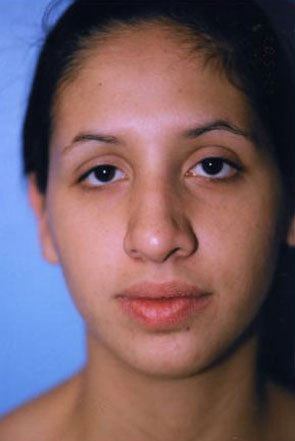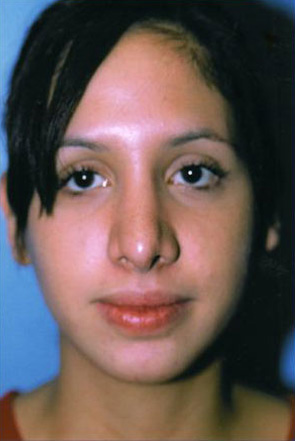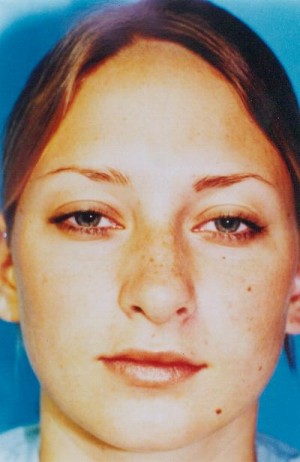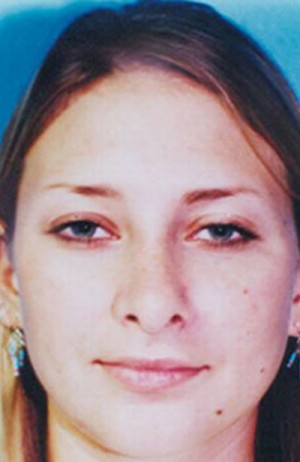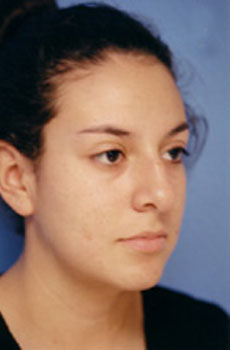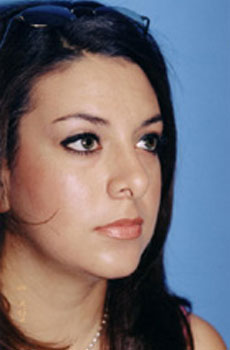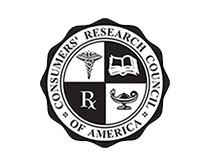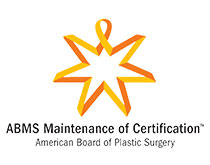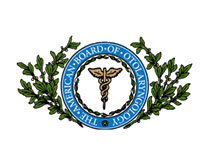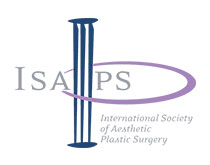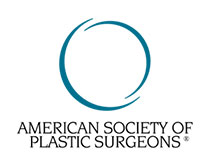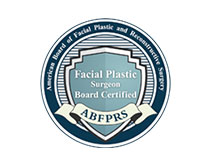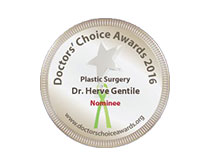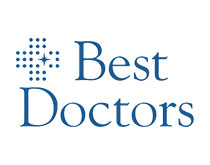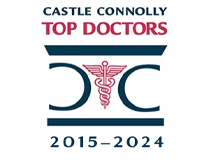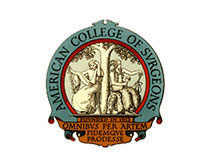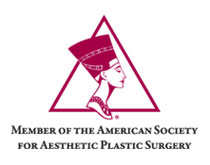Rhinoplasty (Nasal Reshaping)
Conveniently located to serve the areas of Corpus Christi and South Texas
Given its position and prominence, the nose is often thought of like the anchor of the overall appearance of your face.
Even slight disproportion and imbalance of the nose can jeopardize the overall harmony of your appearance. With the rhinoplasty, patients can achieve a subtle, but profound improvement of facial proportion and balance, which is a key aspect of beauty. To learn more, please contact the office of Dr. Hervé Gentile and request a consultation.
Contents
What is a Rhinoplasty or Nasal Reshaping?
There is perhaps no other plastic surgery procedure which blends artistic and technical skills to the degree required in aesthetic rhinoplasty. Performing corrective rhinoplasty is one of the greatest challenges because the surgeon has to attempt to apply his aesthetic judgment to each case and no two noses are quite alike.
Dr. Hervé Gentile is a specialist in primary and revision Rhinoplasty. He is triple board certified in the three specialties that encompass nasal surgery and has taught Rhinoplasty to other plastic surgeons. Nose reshaping is the noblest of the plastic surgery procedures and also the most difficult of them all. It refines a most important aesthetic feature of our appearance and is a very popular plastic surgery procedure. It is also commonly performed on graduating teenage girls as it can dramatically enhance their self-esteem.
He must correct abnormalities very similar but which often require accomplishment by unique methods. In spite of the modern trend toward a unisex, there are distinct differences in the nasal and facial characteristics of individuals according to their sex.
Accordingly, it would be unacceptable to fashion a male nose on a distinctly female face or a female nose on a man’s face. The typical male nose is relatively larger than that of the female and is covered with thick skin tissue. The dorsum is relatively wider, and a dorsal hump is an accepted feature of the male physiognomic profile.
The typical female nose overall is relatively smaller than that of the male with a thinner skin covering. A narrow dorsum is desirable, and a slight concavity of the dorsal line (the “soft sky slope line”) is quite acceptable and pleasing. The lobule should be narrow, and the tip should have a more triangular shape viewed from the front and below. The tip should also be rotated to a greater degree than the male on the lateral profile providing a more softer and gentler overall look.
In both sexes, the non-operated nose tends to elongate with the aging process. This growing or lengthening of the nose is due to the drooping of the tip and a more thicker, coarse, wrinkled skin and lastly to indrawing of the lips secondary to bony change in the alveolar (the gum) processes of the jaws.
Planning
The nose is the most prominent feature on your face, and the goal in nasal surgery is a nose that looks good in addition to a nose that works well.
Planning, therefore, must also address whether your nasal breathing is adequate because appearance and function cannot be separated if a good surgical result is to be achieved. If your abnormalities interfere with breathing through your nose and are the result of trauma, some insurance companies may pay for some of the surgery, but this is less common. Photographic documentation and my operative note are required.
Ideal Candidates
South Texas and Corpus Christi patients interested in a rhinoplasty ideally are in good overall health, non-smokers, and have realistic expectations of the procedure. With the rhinoplasty and with any cosmetic procedure, patients should always choose to undergo the procedure to fit their own goals and no one else’s. Patients who are considering the rhinoplasty should have matured past the age of facial growth. Rhinoplasty can be appropriately performed on teenagers after age 16 provided they have reached their full facial growth. There is no set standard for a “perfect nose,” but rather an ideal nose that best fits with an individual’s appearance.
With rhinoplasty, many changes can be made:
- Dorsal humps can be taken away.
- The nose’s upper lateral cartilages and bones can be altered.
- If the nose is too small, the dorsum (bridge of the nose) can be built up.
- To make the base of the nose less wide, the sides can be brought inwards.
- To make breathing easier, the nasal septum can be addressed.
- If your nasal tip appears boxy, it can be made more triangular. This can be done by resculpting the lower nasal cartilages.
Once the alterations have been made, dissolvable stitches will be used to seal your nasal incisions. To avoid as much discomfort as possible, nasal packing is not used, but your nose will be splinted for support.
Before and After Photos
Consultation
The consultation is one of the most important steps since your particular needs are taken into account with my nasal examination and facial/ body analysis to form a preconceived idea of the ideal shape of your nose. During a consultation, you will meet with Dr. Gentile for an examination and an opportunity to discuss your personal goals.
All our faces when studied carefully exhibit facial and nose asymmetry. In other words, the two halves of the face and the nose do not look exactly alike. This is a desirable characteristic since it adds to the face what artists refer to as “interesting.” Cosmetic make-up techniques may be used to balance an existing asymmetry or to do just the opposite in a very symmetrical face since a very symmetrical face is less interesting. The entire appearance of the individual must be taken into consideration, for example, a tall person can tolerate a larger nose, whereas a smaller nose is more harmonious in shorter individuals.
Sometimes photographs are taken to help both of us analyze your nose and face and communicate your concerns and desires. The photographs should be viewed only as a teaching tool and not be constructed in any way as a guarantee of your result. It does, however, help put your unrealistic expectations aside, demonstrate the asymmetries and help you in evaluating, if needed, the need for chin augmentation. By the same token, although we have the software to do computer imaging, our office does not use it anymore as it is fraught with errors and provides a falsified view of your nose that can lead you to have unachievable and therefore unrealistic results.
Types of Rhinoplasty
Same Day Rhinoplasty
In selected individuals, a non-surgical rhinoplasty can be performed in minutes by injecting fillers. However, the results are not long lasting but are definitely less expensive and therefore more affordable. It entails injecting fillers to recontour your dorsum by actually adding volume to your nose. Therefore some people refer to it as a reverse nose job. During the consultation, Dr. Gentile can discuss your options with you and help you decide if the injectable rhinoplasty is the best procedure for your needs. This procedure is most commonly used to improve minor asymmetries or profile of your nose.
Revision Rhinoplasty
Revision rhinoplasty is one of the most difficult procedures to perform because you are dealing with a three-dimensional structure composed of skin, cartilage, and bone. Although the goal is the same as the primary rhinoplasty the natural tissues have often been severely compromised, requiring a higher degree of technical expertise to perform.
Open and Closed Rhinoplasty
All rhinoplasty surgery will be performed employing either an “open” or “closed” technique. There are benefits to either technique, depending on the specific goals of rhinoplasty. The main difference between the open and closed rhinoplasty is that the open rhinoplasty involves an incision along the columella. With the closed technique, all incisions and corrections are made entirely inside the nose.
An open rhinoplasty always features an incision along the columella. The columella is the skin bridge that separates your nostrils. The incision enables the skin to be pulled back to show the underlying structures of the nose. An open rhinoplasty offers greater visibility and direct access to nasal structures, which in turn results in more precision and control for alterations of the shape of the nose. For revision rhinoplasties that aim to increase or decrease nasal projection or reshape the nasal tip, the open technique is usually ideal.

There is no “perfect” technique that will fit every procedure, but rather the best technique is dependent on your specific case and determined with consideration of what will produce the best results. All of these issues will be discussed during a consultation as the best choice will be dependent on an examination of your nose structure and your aesthetic goals.
Procedure
The procedure lasts about one to two hours, sometimes longer depending on whether a septoplasty is necessary (correction of the middle partition which separates the inside of the nose called the septum). The operation is performed in our private surgical office suite or in the hospital, required for coverage by the insurance companies (extremely a rare event today), generally under local anesthesia with IV sedation (a twilight sleep in which you will feel no pain, and you will be breathing on your own) or general anesthesia. The choice is yours, but most are comfortable and happy having selected IV sedation.
Dr. Gentile’s preference is for a closed approach, which leaves no outside visible scars. The incisions are placed inside the nose and then, reshaping can be performed: your hump can be removed or the dorsum built up if the nose is too small; the tip can be elevated and sculptured by trimming the lower nasal cartilages transforming a boxy tip into a refined triangular one; the sides of the nose that widen the base can be brought together to narrow them; the nasal bones and upper cartilages can be trimmed and repositioned, and the septum, if necessary, can be altered to correct the internal deformity and improve your breathing. After the incisions are closed with self-absorbable sutures, a splint is placed on your nose. Most of the times I do not use any nasal packing, and this will lessen your discomfort. Sometimes, especially in revision nasal surgery, the operation requires an open approach via a small inverted V incision placed at the base of your columella (otherwise it is identical). Dr. Hervé Gentile will work with you to set up realistic expectations communicating clearly what can and cannot be done. Remember that no plastic surgeon can promise you a strict definition of “perfection” as there is no such thing when dealing with the human nose.
Recovery
After the operation, you will be going home, but you must have somebody stay with you that night. You must keep your head elevated at all times for a few days, and any pain can be controlled by medication.
Your bruising and swelling will disappear gradually in the ensuing days, and generally, you will be presentable in ten days. For females, make-up is encouraged, especially around the eyes. Most people return to work within a week to ten days. After a few weeks, you can resume all your normal activities, but you should avoid contact sports for at least six weeks. You must also avoid wearing glasses for a month which can alter the shape of your nose, trauma which occurs commonly in picking up little children and sunbathing since this will promote swelling.

During this period you will also be seen in the office to monitor your progress. The final result achieved is usually permanent and is the result of your healing ability, avoidance of any injuries and your previous nose shape and asymmetry. Occasionally additional changes and revisions may require further procedures.
Results
Immediately after your rhinoplasty, significant changes will be noticeable, but after a few weeks you really begin to see your results. For some patients, the final results can take about a year for their new nasal contour to fully take shape. Though aging can always have an impact on your appearance and barring any future trauma to your nose, your improvements will be permanent.
Cost
The cost will vary depending on the surgeon’s level of expertise, the complexity of your surgery and whether it is a primary or a revision procedure. However, this is a procedure that you do not want to compare prices, but instead, you should carefully and conscientiously research your surgeon and make sure that he has considerable talent and experience in rhinoplasty surgery, a stellar reputation, and consistently favorable results. There are many cases where patients decided for the lowest fee and ended up with an unhappy result. The range can vary between $5,800 to $7,000 or more for revision surgery.
To get a personalized quote, please contact our office today and schedule a consultation. The cost is all inclusive and will include all fees, anesthesia and operating room charges but excludes any lab costs (if needed).
Photographs
For your convenience you may view a few selected cases in our Rhinoplasty Before & After photo gallery. To see our extensive photographic catalogs of pre-operative and post-operative photographs, please contact our office and schedule a complimentary consultation.
